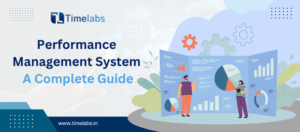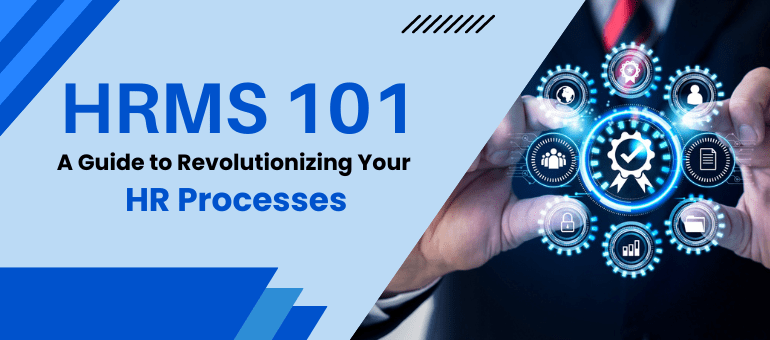As we enter a new year, it’s crucial for HR professionals and managers to set SMART goals that will drive success in their organizations. SMART goals, which are specific, measurable, achievable, relevant, and time-bound, provide a clear roadmap for improving performance, enhancing employee engagement, and fostering a positive work culture. In this article, we will explore 12 SMART HR goals that can help organizations thrive in the coming year 2024.
Increase Employee Retention Rates
Retention will be a top priority for HR professionals in 2024, especially after a year of intense hiring. Retaining employees is crucial as the cost of hiring and training new talent can be significant. To improve retention rates, HR leaders should focus on creating opportunities for career growth and upskilling, providing a supportive work environment, and listening to employee feedback. By addressing the needs and concerns of employees, organizations can foster loyalty and reduce turnover.
SMART Goal Example:
Implement a mentorship program to provide employees with opportunities for professional development and career advancement within the organization. Set a target of reducing employee turnover by 15% within the next six months.
Embrace Digitalization and Automation
In the digital age, HR departments need to embrace technology to streamline their processes and improve efficiency. By automating repetitive tasks, such as leave management and performance reviews, HR professionals can free up their time to focus on strategic initiatives and employee engagement. Investing in talent management software can help organizations automate various HR functions, including hiring, onboarding, performance management, and succession planning.
SMART Goal Example:
Implement an automated performance management system within the next three months to streamline the performance review process and provide real-time feedback to employees. Aim to reduce the time spent on performance reviews by 20% by the end of the year.
Develop Effective Managers
Effective leadership is crucial for the success of any organization. HR professionals should prioritize leadership development programs to enhance the skills and capabilities of managers. By providing training in areas such as emotional intelligence, communication, and adaptability, organizations can empower managers to lead their teams effectively and drive employee engagement.
SMART Goal Example:
Implement a leadership development program that includes workshops, coaching sessions, and mentorship opportunities for managers. Set a goal of increasing employee satisfaction with their managers by 15% within the next year.
Foster a Culture of Accountability
Accountability is essential for maintaining high performance and ensuring alignment with organizational goals. HR professionals should focus on creating a culture of accountability, where employees are held responsible for their work and outcomes. Performance reviews play a crucial role in promoting accountability by providing feedback, setting goals, and recognizing achievements.
SMART Goal Example:
Revamp the performance review process to emphasize goal setting, regular feedback, and accountability. Aim to increase employee satisfaction with the performance review process by 20% within the next six months.
Also, read: Things You Must Know About Application Tracking System (ATS) | Guide
Adopt a People-First Approach
In today’s competitive job market, organizations need to prioritize the well-being and satisfaction of their employees. HR professionals should adopt a people-first approach, where employees feel valued, included, and supported. This can be achieved by promoting a positive and inclusive work culture, addressing any instances of disrespect or discrimination, and fostering collaboration among employees.
SMART Goal Example:
Implement initiatives to promote employee well-being, such as flexible work arrangements, wellness programs, and employee recognition initiatives. Set a goal of increasing employee engagement scores by 10% within the next year.
Enhance Employee Training and Development
Investing in employee training and development is crucial for both individual growth and organizational success. HR professionals should identify the training needs of employees and provide opportunities for upskilling and career advancement. By offering relevant training programs, organizations can improve employee engagement, productivity, and retention.
SMART Goal Example:
Develop a comprehensive training program that addresses the skills and development needs of employees. Set a goal of increasing employee participation in training programs by 20% within the next six months.
Improve Diversity and Inclusion
Creating a diverse and inclusive workplace is not only the right thing to do but also essential for driving innovation and success. HR professionals should prioritize diversity and inclusion initiatives by implementing unbiased recruitment and hiring practices, promoting diversity in leadership positions, and fostering an inclusive work environment where all employees feel valued and respected.
SMART Goal Example:
Establish diversity and inclusion metrics and set specific targets for increasing representation in key areas, such as leadership positions and recruitment. Aim to increase diversity in leadership positions by 15% within the next year.
Enhance Employee Communication and Feedback
Effective communication and feedback channels are essential for fostering collaboration, engagement, and trust among employees. HR professionals should implement tools and processes that facilitate regular communication and feedback, such as employee surveys, town hall meetings, and open-door policies. By actively listening to employee feedback and addressing their concerns, organizations can create a supportive and transparent work environment.
SMART Goal Example:
Implement a quarterly employee feedback survey to gather insights and suggestions for improving the work environment. Set a goal of increasing employee satisfaction with communication and feedback processes by 15% within the next year.
Also, read: Boosting Employee Efficiency: Maximizing Productivity with Advanced HRMS Mobile Apps
Strengthen Employer Branding
A strong employer brand is crucial for attracting and retaining top talent. HR professionals should focus on strengthening their organization’s employer brand by showcasing the company culture, values, and opportunities for growth. This can be achieved through effective employer branding strategies, such as employee testimonials, social media presence, and participation in industry events.
SMART Goal Example:
Develop a comprehensive employer branding strategy that includes social media campaigns, employee testimonials, and participation in industry events. Set a goal of increasing the number of qualified job applicants by 20% within the next six months.
Promote Work-Life Balance
Maintaining a healthy work-life balance is essential for employee well-being and productivity. HR professionals should promote work-life balance by implementing flexible work arrangements, providing resources for stress management, and encouraging employees to take breaks and vacations. By prioritizing work-life balance, organizations can reduce burnout and improve employee satisfaction.
SMART Goal Example:
Implement a flexible work arrangement policy that allows employees to have more control over their work schedule. Set a goal of increasing employee satisfaction with work-life balance by 15% within the next year.
Enhance Employee Recognition and Rewards
Recognizing and rewarding employee achievements is crucial for maintaining high morale and motivation. HR professionals should implement employee recognition programs that celebrate outstanding performance, contributions, and milestones. By acknowledging and rewarding employees’ efforts, organizations can foster a positive work culture and increase employee engagement.
SMART Goal Example:
Implement a monthly employee recognition program that includes peer-to-peer recognition and rewards. Set a goal of increasing employee satisfaction with recognition and rewards by 20% within the next six months.
Stay Updated on HR Trends and Best Practices
The field of HR is constantly evolving, and HR professionals need to stay updated on the latest trends, technologies, and best practices. HR professionals should actively seek professional development opportunities, attend industry conferences, and network with peers to stay informed and ensure their HR strategies align with industry standards.
SMART Goal Example:
Attend at least two HR conferences and enroll in two professional development courses within the next year to stay updated on HR trends and best practices.
Also, read: The Power of HR Analytics: Unlocking Insights and Driving Decision-Making
In conclusion, setting SMART HR goals is crucial for organizations to thrive in 2024 and beyond. By focusing on employee retention, digitalization, leadership development, accountability, and employee well-being, HR professionals can create a positive work environment and drive organizational success. Adopting a people-first approach, enhancing employee training, and promoting diversity and inclusion are also essential for attracting and retaining top talent. Strengthening employer branding, promoting work-life balance, and implementing employee recognition programs can further enhance employee engagement and satisfaction. Finally, staying updated on HR trends and best practices ensures that HR strategies remain relevant and effective in a rapidly changing business landscape.



